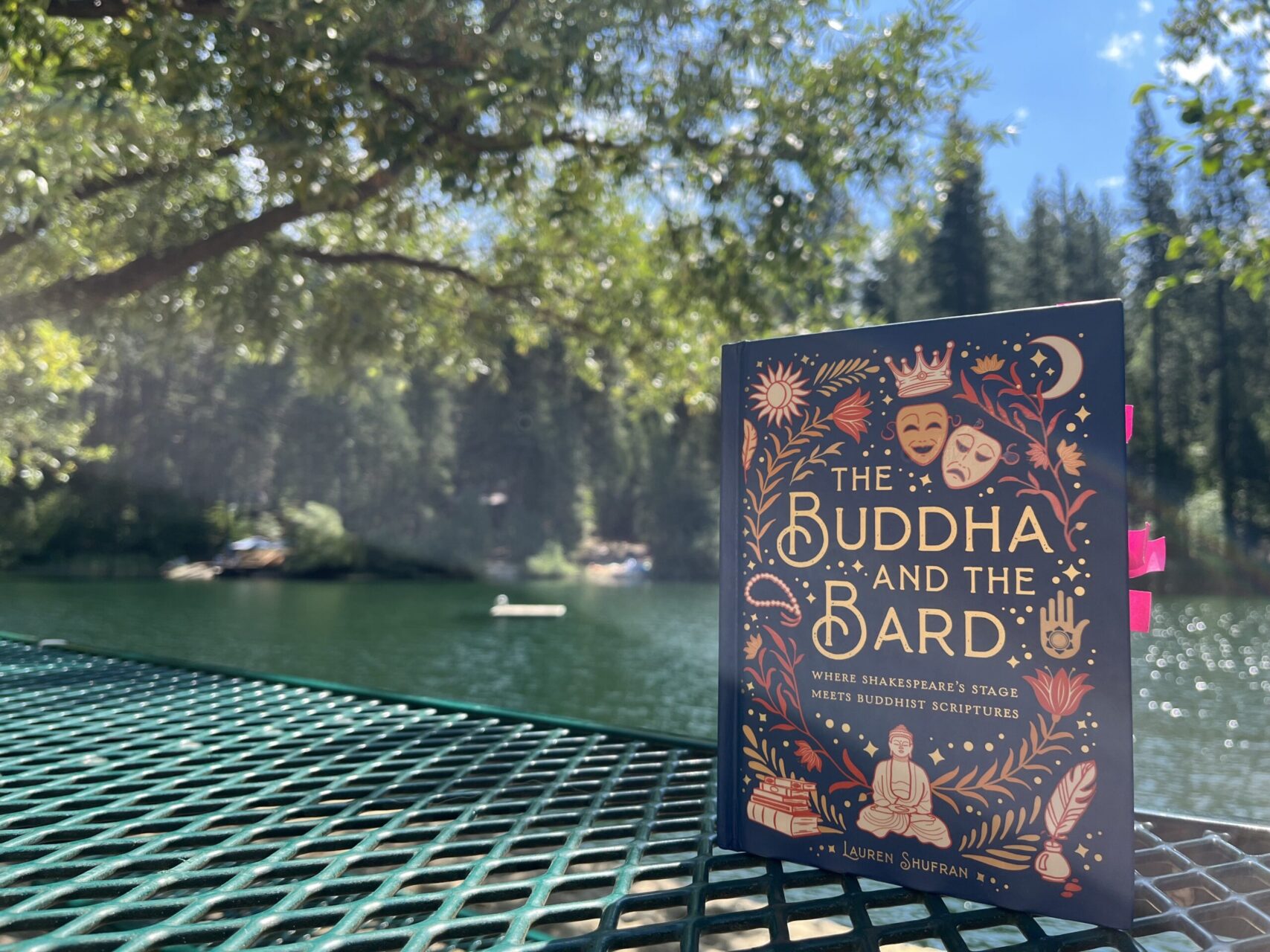Book Review : “The Buddha and the Bard” | Review By Lauren Farrauto
Most seasoned yogis are familiar with Buddhist teachings, at least a few principles or maybe the Four Noble Truths. And, I can guarantee that everyone that went to a public high school has read at least one Shakespearean play — likely Romeo and Juliet or Macbeth. But, have you ever stopped to consider the human condition as described in Buddhist scriptures through a Shakespearean lens? Probably not, but don’t worry; Lauren Shufran wrote an entire book on the subject. The Buddha and the Bard is a spirituality/self-help new release that breaches the gap between Western dramatics and Eastern philosophy in an insightful and approachable way.
As an English major in college, I read a great many of Shakespeare’s plays, so I felt confident in my knowledge of them going into this book. Buddhism, on the other hand, is a subject I know very little about. My worries about whether or not I’d understand what Shufran was trying to get at were unfounded, however. Each chapter completely explains each concept and teaching in a clear, succinct way, making sure the reader doesn’t feel left behind.
And, if you can’t recite Hamlet’s famous “To be or not to be” monologue, you don’t need to fret either. Shufran expertly contextualizes each Shakespearian passage she cites, explaining what’s going on in the play prior to drawing a comparison to Buddhist scriptures. While you may encounter some spoilers for plays you are unfamiliar with, I never found them unwelcome. Shufran’s writing was so engaging, and I was eager to see what unique connections she would draw next.
The book itself is broken up into seven distinct sections, with short chapters delving into each topic deeper. For example, in “The Three Marks of Existence” section, Shufran examines the suffering of conditioned reality using Hamlet. “What piece of work is a man!” Shufran quotes from Hamlet himself. “How noble in reason, how infinite in faculty, in form and moving how express and admirable, in action how like an angel, in apprehension how like a god… And yet to me what is this quintessence of dust?”
This is a lot to unpack at first, but Shufran explains that Hamlet is portraying these lines in madness after finding out that *spoiler alert* his father was murdered by his uncle. Hamlet then considers his best course of action as he says the above lines. Shufran then analyzes what she just quoted, describing that “reason,” “faculty” and “form” are the elements of our humanness that “obscure us from ourselves… [they] will ultimately dissatisfy us if we think they’re all there is.” Hamlet is also frustrated by humanity’s dishonest nature, revealed to him by the dishonorable actions of his family and friends. On the next page, Shufran suggests that we, and Hamlet, “watch the defilements arise and take shape as temporary phenomena. And then we watch them go, as they will, without interfering or identifying with them,” thus releasing the suffering of conditioned existence. Hamlet, a deeply flawed character would likely have benefitted from these lessons.
Each chapter is only about three to five pages long. Shufran packs a punch in a short amount of time without losing any substance. Additionally, I found that the short chapters made it easy to go back and reread parts that didn’t make complete sense to me on a first pass. If you wanted to hone your practice in on a certain section, the set-up of the text makes it easy to do so by breaking up each over-arching topic into bitesize lessons. I often wrote in my copy, underlining quotes and ideas that stood out to me or that I’d like to revisit at a later time.
I’d highly recommend this book to anyone looking to deepen their connection to Buddhist scriptures in a new and interesting way. After all, both the Buddha and the Bard sought inner wisdom and aimed to see bigger than their own experiences.
Optimize your immune system with nourishing herbs such as Elderberry, Burdock, Nettles, Cleavers and Astragalus. Serve yourself up [...]

Subscribe to Our Tribe
Stay up to date with Y+L News, Events and special announcements.










